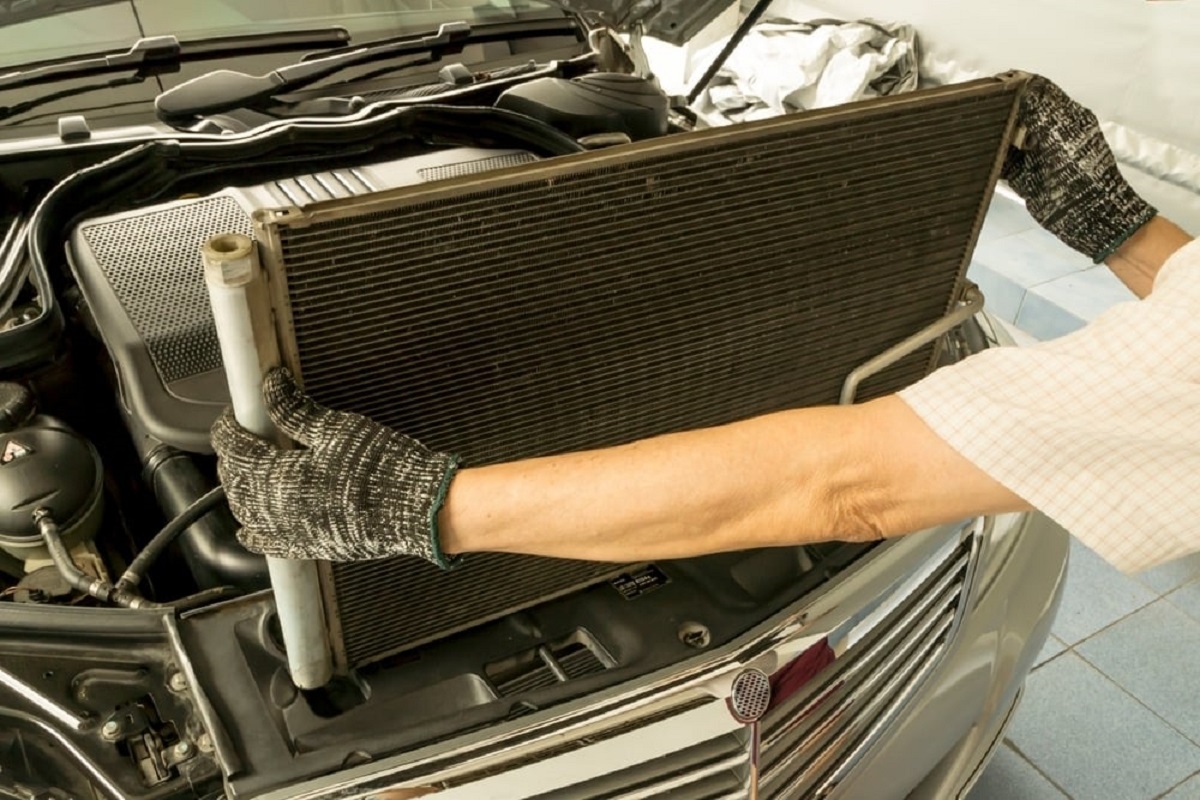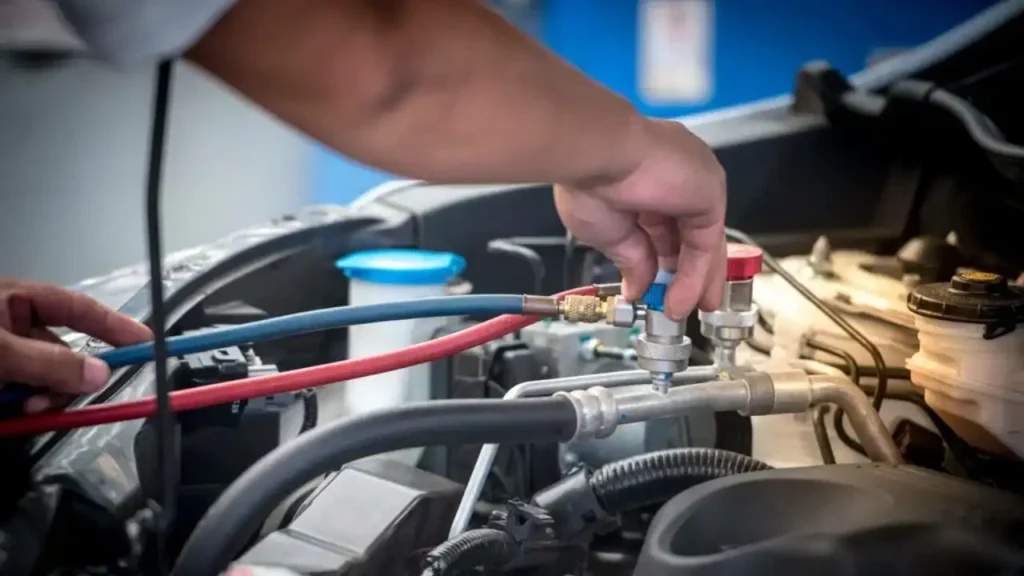Having a working air conditioning (AC) system in your car is extremely important, especially during the hot summer months. When your AC isn’t blowing cold air anymore, it’s time to get it serviced by a professional. But what does a car ac service include? Read on to find the answer to this question as we take a closer look.
What’s included in a Car AC Service?
Evaluating Your AC System
The first thing an auto technician will do is conduct a thorough evaluation of your vehicle’s AC system. This allows them to diagnose any issues and determine what needs to be done to fix them.
To evaluate your car’s AC, the technician will connect special equipment to test things like:
- Refrigerant pressure to see if low or leaking
- Operation of the compressor
- Blower fan speeds
- Temperature output at the vents
- Functioning of the condenser
Checking for Leaks

Before starting the process of car AC repair, technicians start checking for leaks. If refrigerant levels get too low from a leak, your AC won’t blow cold anymore. The technician will use special dye and ultraviolet lights to detect even the smallest refrigerant leaks. Tiny leaks can be repaired, while larger ones may require replacing parts like seals or o-rings. Re-sealing connections are also common.
Recharging Your AC System
If refrigerant leaks are found, the next essential step is to recharge your AC system with new refrigerant. This involves adding refrigerant until pressures return to the manufacturer’s recommended specifications.
The correct type and amount must be added, which takes expertise – too little won’t make the AC cold enough, while too much can damage components. A servicer will recharge your system only with what it needs after thoroughly inspecting it.
Replacing Key Components

Some common reasons your car’s AC blows warm air include problems with the compressor, condenser, expansion valve, or evaporator. Your technician may find that one or more AC components have failed and need to be replaced.
This can involve parts like:
- Compressor clutch and coil
- Condenser fan motor
- Expansion valve or orifice tube
- Evaporator
Cleaning Air Ducts & Vents
For optimal airflow and cold air output, your car’s AC ducts and vents need to be properly cleaned out. Dust, pollen, and debris can accumulate here over time, obstructing airflow.
The technician will thoroughly clean out built-up contaminants to allow air to freely flow through the output vents once again. Clean ducts and vents mean colder, stronger airflow to keep you comfortable.
Replacing Cabin Air Filter

You may not even be aware that your car has an air filter for the interior cabin. Like your engine air filter, it needs periodic changing – typically every 12,000 to 15,000 miles. Replacing a dirty cabin filter ensures clean, filtered air inside your car instead of musty odors.
Find Future Possible Leaks
As part of preventative maintenance, most AC service involves adding fluorescent dye to your AC system. This dye circulates with the refrigerant and will show up under UV light if any new leaks start to occur after service.
This makes it very easy for a technician to spot and pinpoint even tiny refrigerant leaks next time your car’s AC isn’t working properly. Early leak detection means faster repairs.
Providing a Performance Test
The final step is to verify your AC system is operating correctly by running it through a full performance test. This generally consists of:
- Testing vent output temperatures at various fan speeds with doors closed
- Checking compressor cycling
- Confirming smooth engagement of the clutch
- Verifying condenser fan operation
This ensures your AC system has been properly repaired and recharged, cooling your car effectively once again without issues. You’ll drive away with renewed cold air ready for the summer heat!
AC Maintenance Tips for Peak Performance
- Schedule seasonal AC checks even if it’s still blowing cold – this allows technicians to fix minor problems before they turn into big repairs
- Consider replacing your cabin air filter yearly for maximum AC efficiency – a dirty filter reduces airflow
- Clean the AC condenser coils periodically to prevent debris buildup that can block airflow
- Have the evaporator drain tube checked for clogs which can cause water to overflow inside your car
- Make sure all your car’s windows are shut tight during AC testing so the technician can best evaluate vent output
- Ask if your refrigerant meets modern environmental guidelines and if it needs recharging
- Inquire about adding UV leak detection dye annually as part of leak prevention
- Consider having your belts, hoses, and other parts checked at the recommended intervals to avoid breakdowns
- If AC issues pop up quickly after a repair, promptly take your car back to the shop to have it rechecked
- Keep the area around your car’s radiator free of obstructions so the condenser gets proper airflow
- Have any strange AC smells or noises investigated as soon as possible
- Ask for a test drive after AC servicing to feel the cold air flow firsthand
- Ensure replacement parts used meet OEM specifications for optimal performance and longevity
The Bottom Line
From refrigerant leak detection to recharging low refrigerant and replacing failed parts, we have explained in detail what does a car ac service include. Professional AC servicers use specialized tools and expertise to evaluate, diagnose, repair, and test your entire vehicle AC system.
The result is an AC unit blowing cold, clean, and comfortable air just like new again. With proper preventative maintenance and servicing, your car’s air conditioner will keep you cool for many more miles to come.
Read more: Warning Signs Your Car AC Compressor is Going Bad






